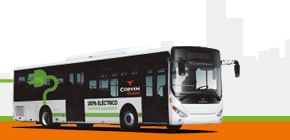The initiative, part of the new Development Concept for the Production and Use of Electric Automobile Transport signed by Prime Minister Mikhail Mishustin last month, aims to encourage the adoption of electric vehicles among the public, The Moscow Times, citing RBC news agency, reported.
Those plans come atop other reports that the government intends to invest as much as $10.5 billion in electric car development, according to the Vedomosti business daily. Under those plans, forwarded by the Ministry of Economic Development, some 1.5 million EVs will be rolling down Russian roads by 2030, supported by a network of as many as 72,000 new charging stations.
The plan, which has not yet been published, also allocates $1.7Bln of the total to developing hydrogen-powered vehicles.
“Bellona welcomes the approval of the concept for the development of production and use of electric road transport in the Russian Federation for the period up to 2030,” says Yury Sergeyev, the senior advisor on energy and electromobility at Bellona’s Murmansk offices. “The Russian government has set very ambitious goals, especially if we keep in mind that the industry of both cars and charging stations in Russia is in its infancy.”
The measures seem prompted by Western automakers, many of which have recently pledged to phase out manufacturing cars running on traditional fossil fuels within the next few years. Over the summer, Ruslan Edelgeriev, climate adviser to President Putin, seemed to acknowledge this.
“Leading automakers, globally and in Russia, are announcing new electric vehicle lines. A lot of them plan to stop making internal combustion engine cars by 2030,” he said. “In the next 20-30 years everyone will transition to electric vehicles.”
Under the initiative signed by Mishustin, the Russian government plan projects an increase in the sale of electric vehicles to as many as 25,000 by 2024, making up 10% of nationwide car sales by 2030. It’s an optimistic prediction time when only 0.05% of car sales are accounted for by electric cars. Such growth would meant that EV sales will grow by 20 times in the next nine years.
To get there, the government envisions a system of subsidized loans and leases to motivate EV buyers. Manufacturers in turn will get subsidies for building new EV and battery factories, according to the plan.
But according to The Moscow Times, the toll-free status of EVs won’t amount to a bonanza of free travel for newly electrified drivers.
That’s because, out of a total of 1,553,700 kilometers of roads within Russia, only 50,000 kilometers are federal highways. Moreover, the share of toll roads – the ones that EVs would be able to traverse for free – is even smaller: A mere 1,950 kiolmeters, or just 0.02% of the total.
Still, Russia’s electric car market continues to experience exponential growth, though the number of EVs on Russian roads is dwarfed by numbers seen in neighboring Scandinavia. According to AUTOSTAT, Russia’s automotive statistics agency, 657 new electric cars were sold in 2020, nearly doubling the figure sold in 2019.
The bigger numbers are seen in the used electric car market. Last year saw the registration of 5,237 second-hand EVs, which migrate from Asia via Russia’s Far East. That sales figure was a 60% jump on the previous year’s used EV sales.
Bellona’s Sergeyev says the EV Development Concept will require significant investment.
“It is not yet clear where the funding is expected from,” he says. “It is stated that the sources are federal, regional and extra-budgetary. That is a fairly standard formulation, according to which it is not clear from where the investments will come from.”





















